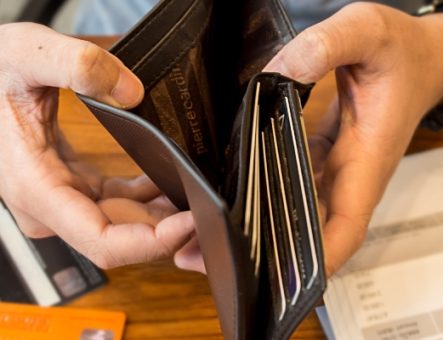Are you getting good value from subscription services and contracts? Subscription services are common across our lives. From TV to books to food delivery, companies are increasingly asking us to sign up for a monthly subscription plan to access their services. Similarly, when we sign up to goods and services, we often pay for more than we need without thinking.
Here are some tips on how to assess what you get versus what you pay for, and discover if you can save some money along the way.
Ads or no ads?

Increasingly, streamers are offering ad-supported plans to their services. This is when adverts interrupt programmes or appear before or after songs. These tiers tend to be significantly cheaper than tiers with no adverts – sometimes they are even free.
One of the biggest TV streamers is Netflix, with over 260 million subscribers worldwide. They offer different levels of subscription, all at least in HD. Their cheapest plan comes with adverts, meaning your shows will be interrupted by ads, like on ITV or Channel 4.
If you want no adverts, then the price more than doubles at the next tier.
The final tier sees a rise in price again, but as well as no adverts, you get 4K (Ultra HD) + HDR, immersive sound and you can play it on more devices. This tier is currently over three time as expensive as the ad-supported tier. As a result, if you don’t have any 4K devices to watch on, you are significantly overpaying for the service.
You can check what you get from Netflix by logging into your account. Here you can switch tiers or cancel from there.
Similarly with Spotify, the music streaming giants. Their premium service offers ad-free streaming. Unlike their free service you can select what music you want and play your tunes on your smart speakers. If all you want is some background music and aren’t fussed what it is, then perhaps you could save over £10 per month and opt for the free service.
Mobile data

We all like being connected to the internet through our phones. When away from home, having enough data to suit our needs is critical. Business travellers may need a high amount of data if they enjoy downloading movies to watch when on a train or at a hotel. These types of users are probably looking for at least 20 gig data plans. Regular users, however, might not need as much.
If you use your phone to check on Facebook, send a few emails, stream music or play some games when away from home, you probably don’t need much more than 2-5 gig a month. Your monthly bills should tell you how much data you use each month, and it’s worth comparing that to how much you pay for. If there is a significant difference, then you could save money by downgrading your data plan. Speak to your phone provider to see if they can help.
Broadband

When we are at home, our internet broadband helps keep us connected. Whilst most offer unlimited use, it’s worth checking that you need the speeds you are paying for. There are three levels of broadband typically available through your phone line:
Standard broadband has download speeds of less than 30Mbps.
Superfast broadband has download speeds between 30Mbps and 300Mbps.
Ultrafast broadband has download speeds of greater than 300Mbps.
If you have only a few devices in your home and use them for social media, streaming TV or surfing the web, you will be absolutely fine with superfast broadband. If you have a few devices in the house, all being used separately to stream or game, then superfast is a better option. And if you stream a lot in 4K, game online and download a lot of large files, then ultrafast broadband is perfect.
Make sure you know what speed you are getting and that you are making the most of it by contacting your internet provider. You can find out who that is by visiting (whilst connected to your home broadband) this ISP search page.
Flight luggage

When booking flights, we’re required to book luggage storage too. It’s worth considering if you need extra storage – could you fit all your travel belongings in hand luggage and keep it in the cabin with you as carry on?
It’s important to check to see the maximum size and weight of carry on luggage. Although it tends to be around 18 kilograms, It varies between different airlines. This is especially important to check if you are taking more than one flight. Taking only carry on luggage is not only cheaper, but means no waiting at the luggage conveyor belt so you can get on with your day faster.
So whatever you are subscribed to, it’s worth checking in every so often to make sure you are still getting your money’s worth. Has the price risen without you noticing? Are you getting more (or less) features with your plan? If so, try moving to another one, or follow our advice on how to cancel a subscription plan you no longer need. And if you’d like to find out more ways to save money, then speak to our advisors who will guide you.
Contact us










